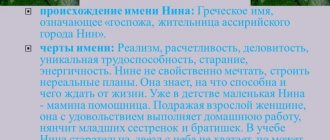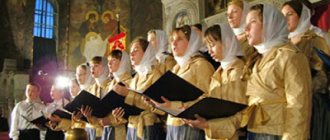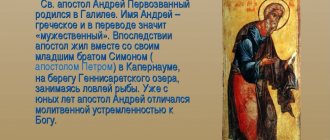From antiquity to the present day
Today we hear readers in church reading a variety of liturgical texts. In ancient times, the reader not only read, but also interpreted the meaning of difficult-to-understand texts, translated them into the language of his locality, delivered sermons, taught converts and children, sang various chants and was the custodian of sacred books. The reader was also responsible for lighting the lamps in the altar and presenting them during the service. Already in the early period of its existence, the Christian Church took care to ensure that readers were taught not only skillful, but also reasonable, meaningful reading. In the first three centuries, those Christians who confessed their faith to the pagans, that is, openly declared that they were members of the Church of Christ, were appointed to the position of reader. In the ancient Church, readers were highly respected: they were people of noble birth. In the Russian Orthodox Church, a reader is the lowest rank of clergy (not to be confused with clergy). He is appointed to his position by the rector of the temple, and is promoted to the rank by the rank of consecration - the laying on of hands, which is performed in the middle of the temple. The right to appoint junior clergy to clergy degrees belongs to the bishop; in monasteries, consecration can also be performed by their abbots - archimandrites and abbots.
Instructions for the Church Reader
1. Remember that when you read the Apostle or proverbs in church, you proclaim in the ears of all those praying the word of God, which serves for salvation, admonition, and edification. Therefore, read with extreme reverence, clearly, distinctly, slowly, so that every word is perceived by those listening.
2. Before the service, carefully read the assigned reading in order to read it accurately and with the correct semantic stops.
3. When reading, you should correctly divide the text into small semantic groups of words, making semantic stops (drawing out with your voice). Punctuation marks often placed in the text can help with this.
Reading with correctly placed semantic stops makes it easier for listeners to perceive what they are reading.
4. When reading the Apostle or proverbs, one should not shout excessively and obscenely, carried away by vile vanity or unreasonable imitation of the “protodeacon’s thunder”; on the contrary, we need to read with a natural voice, without stress that is burdensome to the ear, without unnatural lows at the beginning of reading and exorbitantly high notes at the end, to read reverently, clearly and majestically, so that it does not turn out that we bring to God only the fruit of the lips, but the fruit of the mind and heart we offer to vanity, and the fruit of the lips is rejected by God as a sacrifice defiled by vanity, according to St. Ignatius Brianchaninov.
5. Also, you should not start reading on very low notes, especially for those readers whose voice is not a baritone or bass, but a tenor, or who has a weak voice or a narrow vocal range. In this case, the reading turns out to be quiet, hard to hear and does not reach the listeners.
6. If the Apostle is read in the middle of the temple, then the following order should be observed:
At the beginning of the liturgy, during the singing of the figurative ones, it is necessary to go to the altar to put on the surplice in advance, and then take the blessing for the reading of the Apostle.
7. Enter the altar with great reverence, making the sign of the cross and kissing the image of the Archangel on the side doors. Enter the altar, turn to the throne, make three bows to the ground on weekdays or three bows to the ground on Sundays and the Lord's holidays, and then one bow to the ground, turning to the altar.
8. Having received the surplice (folded upward with a cross) from the sexton, take it in both hands; go to the serving senior priest and take a blessing to put on the surplice; kiss the blessing right hand of the priest. After this, having made the sign of the cross and kissed the cross on the surplice, put on it. (It is recommended to take the blessing to put on the surplice and put it on before the small entrance).
9. In the Apostle, find the necessary reading from the apostolic epistles and prokeimenon (or prokeimenon) with verses and verses on alleluary. Note everything with bookmarks (ribbons).
10. After the small entrance, at the beginning of the chanting of the Trisagion, taking the Apostle in both hands and holding it in front of you, go to the senior serving priest and take a blessing for the reading of the Apostle (responding by bowing your head to his blessing or kissing the blessing right hand of the priest placed on the Apostle). After this, go out the side doors from the altar to the middle of the temple.
11. Walking from the altar to the middle of the temple and back after reading, hold the book in your left hand, slightly leaning its top against your chest. When passing by the local icon of the Savior or the Mother of God in the iconostasis, bow and move on.
(Note: If the Apostle or proverbs is read by a psalmist who, as a singer, does not have the opportunity to go to the altar for a blessing, then he goes to the middle of the temple after the Trisagion, holding the book in his left hand, slightly leaning its top against his chest. Walking to the middle church from the choir and returning after reading to the choir, he bows before the icon of the Savior or the Mother of God.)
12. Standing in the middle of the temple in front of the royal doors, make a small bow, turning to the altar.
13. After the Trisagion, to the words of the serving priest “Peace to all,” the reader bows to the priest, saying: “And to your spirit.”
And after the exclamation of the priest (or deacon): “Wisdom” reads aloud to the whole church: “Prokeimenon, voice (such and such) ...” and the words of the prokeimenon itself.
Then, after the first singing of the prokeemna, the reader reads the verse; the choir sings the prokeimenon a second time, after which the reader reads the first half of the prokeimenon aloud, and the choir finishes the second half. The verses for the prokeimenon should be recited when the choir stops singing, and not during the singing of the prokeimenon.
After singing the prokeemna, the deacon or priest exclaims a second time: “Wisdom,” the reader pronounces the title of the apostolic reading, and then, when the deacon or priest says “Let us hear,” the reader bows to the serving priest and begins the reading of the Apostle. (The title or title of the apostolic reading is taken from the Apostle; it is placed at the top of the pages, for example: “Reading the Epistle of the Holy Apostle Paul to the Corinthians” or: “Reading the Epistle of Peter (John)”, etc.)
14. After finishing the reading, in response to the words of the serving priest “Peace be with you,” the reader bows to him and says in an undertone: “And to your spirit.” Alleluia, alleluia, alleluia." (And if the psalm-reader read, then he goes to the choir to sing the alleluary.)
When the choir sings the first “Alleluia,” the reader, standing in the middle of the temple, says the first verse of the alleluaria (the singers must be silent at this time), after which the singers sing “Alleluia” again. After the second singing of “Alleluia,” the reader recites the second verse and adds “Alleluia” at the end, and the choir sings “Alleluia” one last time.
The reader, having bowed to the altar, and then at the local icon, goes to the altar.
15. In the altar, the reader stands with a book until the priest exclaims “Peace to all,” after which, having taken the blessing from the priest, the Apostle places him in his place. After reading the Gospel, having removed the surplice and bowing to the holy throne, he leaves the altar and, having bowed to the local icon, goes to the choir.
Recorded February 6, 1956
To the choir with blessing
“But how can that be?” - you ask. After all, we often see women in the choir in church. It turns out that in our time, people who read in churches are often not readers by rank, but only perform their duties. According to the canons, only men were appointed as readers. But it is no secret that these days it is often not possible to find the required number of Orthodox men, and even those with good voices, who are ready to read daily the long sequences of the daily cycle of worship. And in rural parishes, even one reader is a luxury. But you have to serve. And then the rector of the temple blesses for this obedience the one who is capable of it and has the desire to work in the temple: any parishioner or parishioner. Several years ago, when I was still in Sunday school, I became eager to do something for the temple. The liturgics and Church Slavonic language workshops were my favorites. When we already became students and graduated from Sunday school, we did not want to leave its walls, we dreamed of being useful. Some began to teach the kids lessons in the Law of God, some continued to be sextons, and some mastered the obedience of a bell-ringer and a reader. So, with the blessing of our rector, I ended up in the choir. Based on my experience, albeit small, but still, I can talk about what a reader should know and be able to do.
Church Slavonic language
All books used in worship are written in Church Slavonic. And this is the first thing the future reader should know. Basically, people who come to the choir are familiar with the liturgical language of the Russian Orthodox Church. But there are also exceptions. One of my acquaintances, now a seminarian, was appointed a reader without even having basic knowledge. To his objections that he did not know the Church Slavonic language, the abbot replied: “It’s okay, there would be a desire, and the rest will follow.” And indeed, over time, with more frequent attendance at divine services and participation in it, reading short introductory prayers, he began to slowly understand Church Slavonic and even fell in love with it. I had few problems with this; after all, I studied at Sunday school, where we were taught to read liturgical texts. If you still haven’t learned, then I’ll give you some advice that our senior charterer, in turn, gave me. The best “helper” in learning the Church Slavonic language is the Psalter. To begin with, it is better to read it all in Russian transliteration. Then read the psalm 2-3 times in transliteration, and then in Church Slavonic, and when the word is not clear, then check it out. But the most important thing is to read out loud and preferably every day.
Liturgical Charter
The second is knowledge of the liturgical Rules. The reader requires both knowledge of the contents of liturgical books and the ability to find in them this or that prayer, this or that instruction regarding services, prayers and chants. I will list the main books used by the reader at the service. The Book of Hours is the most widespread and most frequently used liturgical book. It contains the texts of the unchangeable prayers of the daily liturgical cycle. Prayers in honor of the saints for each day of the year are contained in the Menaion. It is used for singing stichera and troparions, reading canons, sedals and paremias. The Octoechos contains the texts of variable prayers in eight voices for each day of the week; it is also used for singing stichera and troparions, reading canons and sedals. Apostle is a liturgical book containing the Acts and Epistles of the holy apostles with special markings at the beginning - fragments for reading during various services. It also contains the annual liturgical schedule of New Testament readings, indicating the prokeemnes and alleluaries. Lenten Triodion - it contains prayers for the services of Great Lent and the three preceding preparatory weeks, which are very different from everyday ones. The colored triode includes hymns from the day of Holy Easter to the Week of All Saints. And finally, the Typikon, or Charter. It contains detailed instructions: how, throughout the entire church year, day after day, to combine during divine services in a certain order and in the required quantity the prayers and chants contained in all liturgical books. There are also “Divine Service Instructions” for each year, which are not intended to replace the Typikon, but to help in using it, especially in cases where difficulties may arise during the performance of divine services. The rules of Orthodox worship are, of course, not simple. But gradually they assimilate it. First, the reader is blessed to read the opening prayers, prayers of thanks for Holy Communion, then the hours and kathismas, then the more complex canon at Matins, etc. The Liturgical Rule can be studied in special courses and in theological educational institutions: seminaries, schools, and also in the Regency schools. But I know of many examples where people were able to study it well on their own. It is quite possible to master all the intricacies of worship by using the relevant literature, of which there is a lot now. True, for this it is necessary to put the acquired knowledge into practice. Books such as “The Divine Service Charter of the Orthodox Church” by V. V. Rozanov, “A Guide to the Study of the Divine Service Charter of the Orthodox Church” by priest K. Subbotin, “The Charter of Orthodox Worship” by the teacher of the Saratov Orthodox Theological Seminary A. S. Kashkin will help with this. It is also very useful to read “Instructions for the Church Reader on How to Read in Church,” compiled by G. I. Shimansky according to the teachings of the holy fathers and ascetics. These tips help to avoid indifference and spiritual cooling in the choir, which can appear over time, to cultivate a reverent attitude towards the shrine, to prayer and to protect oneself from temptations. And you also need, without hesitation, to follow on the heels of experienced readers. At one time, I did not leave our senior charter manager alone, I wrote down and remembered all the important points. But I gained a lot of knowledge already in the choir.
When reading the Apostle during the Divine Liturgy:
The reader approaches the priest or bishop on the High Place during the singing of the Trisagion with a liturgical book in his hands. Books, when used in worship, are carried in an upright position with both hands, the front cover facing away from the reader, as they move. Books are never carried at the side, under the arm, etc. (it must be emphasized that tonsured readers or ordained subdeacons, according to the rules, must always read during the service in a cassock and surplice).
The “Apostle” must be presented to the clergyman, who blesses the reader and places his right hand on top of the book, which the reader, in turn, kisses. He then exits through one of the side "deacon" doors onto the sole and moves straight to the place designated for reading. If he arrives before the choir has finished singing, he stands with the book closed in front of him until the time comes to begin the prokeimenon, etc. After which he opens the book and always holds it with both hands (never in one hand).
When the reader is in the center of the temple to perform the reading and to pronounce the exclamations that precede and follow him (that is, the response after the exclamation “Peace to all!”, Prokeimenon, Hallelujah), he must always stand upright. During the exclamations, the reader never bows or crosses himself in any place (since both hands are holding the book). Likewise, he does not bow or make any other oblique gesture at the end of the reading, but remains standing upright.
After the hallelujah is completed, the reader re-enters the Altar. If there are enough clergy to take care of accompanying the Gospel reading (carrying out candles, etc.), the usual practice is for the reader to stand on the right (south) side of the throne, facing it, while the closed book is held in front of him and remains in this position while the introduction to the Gospel reading takes place. Only when the deacon says: “Let us take a look…” and the reading of the Gospel begins, the reader approaches the priest in the High Place, presents him with a book and again accepts the blessing, and then retreats to reverently listen to the Gospel. However, if there are not enough servants in the altar and the reader is also required to carry a candle or perform some other action while reading the Gospel, then immediately after entering the altar he can bring the book to the priest, receive a blessing from him, then put the book aside and perform their additional responsibilities.
Reading the Old Testament:
When Old Testament or other readings are scheduled (for example, proverbs at festive vespers), the readers (tonsured or laymen) must bring the liturgical book to the altar and present it to the priest before reading, then, having received the blessing, go out into the nave to read. At the end of the reading, they return to the altar to receive another blessing.









